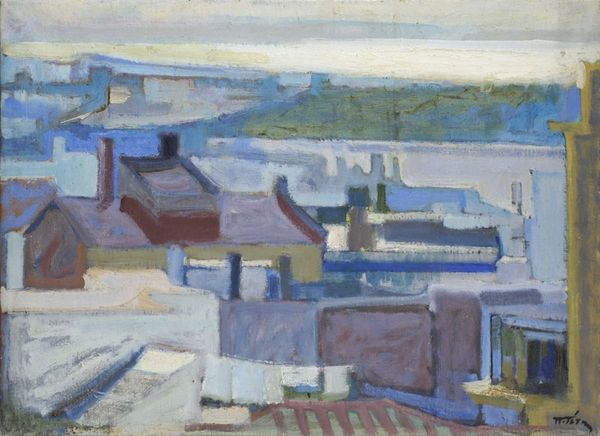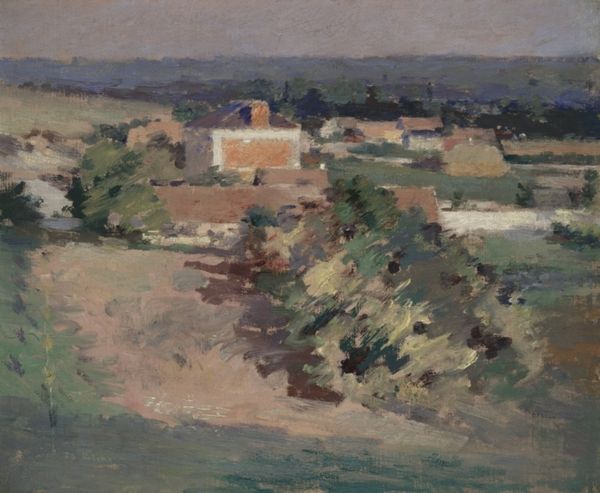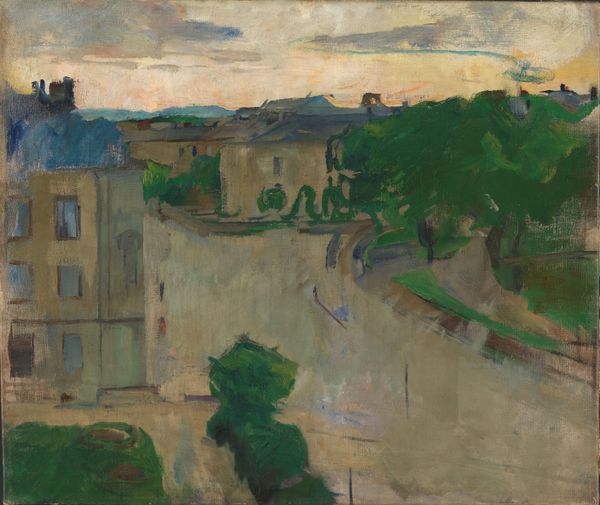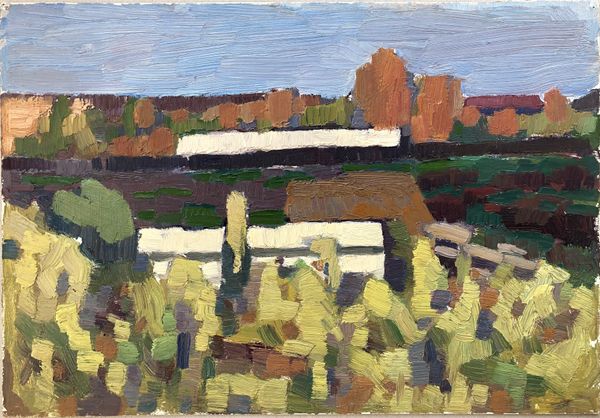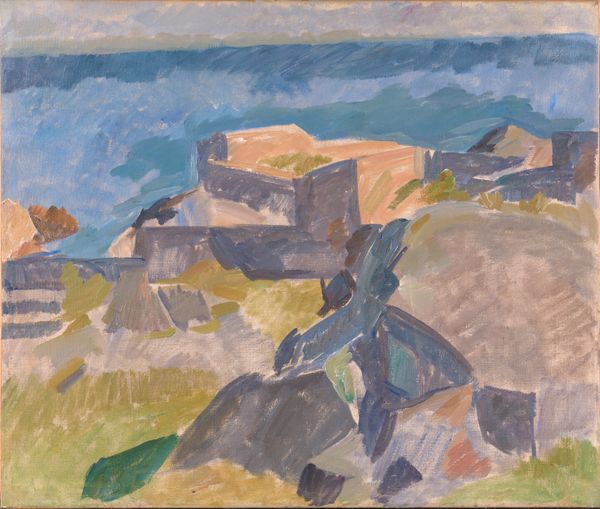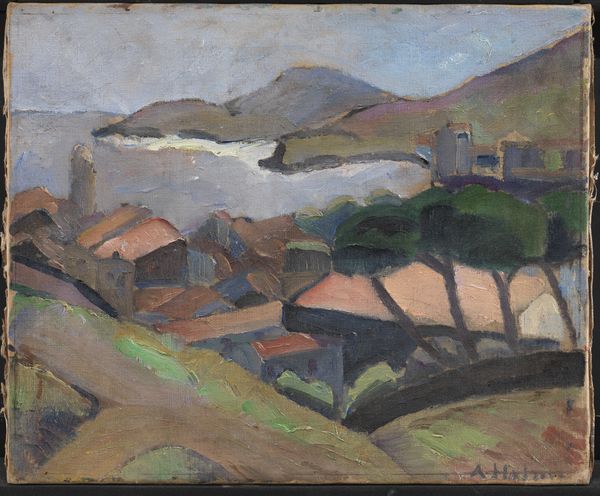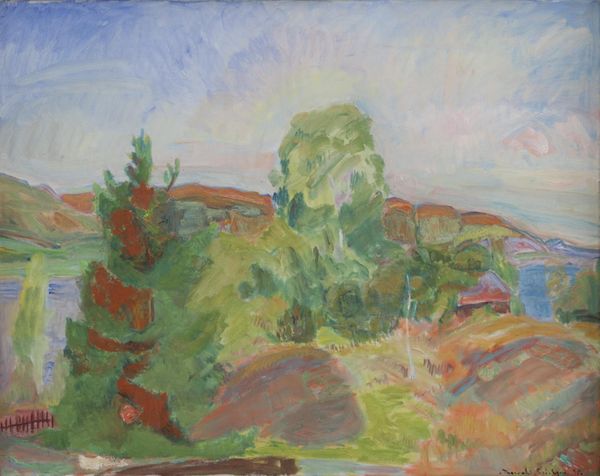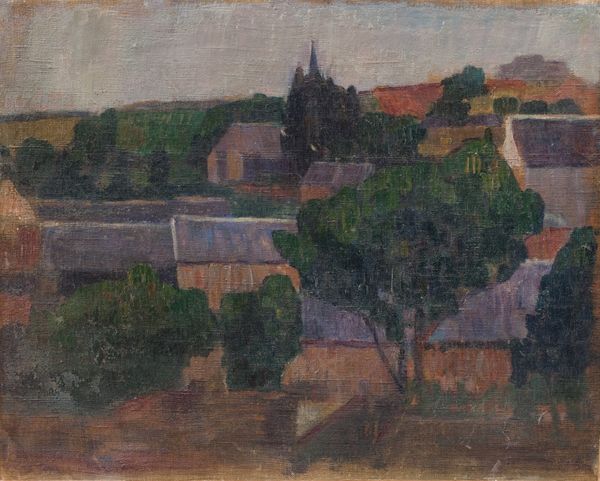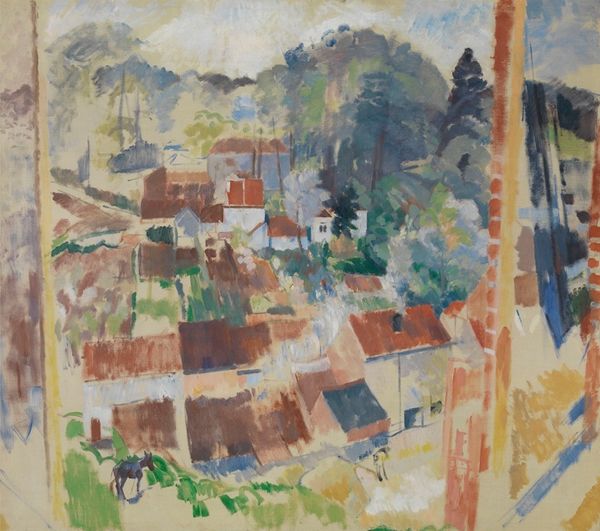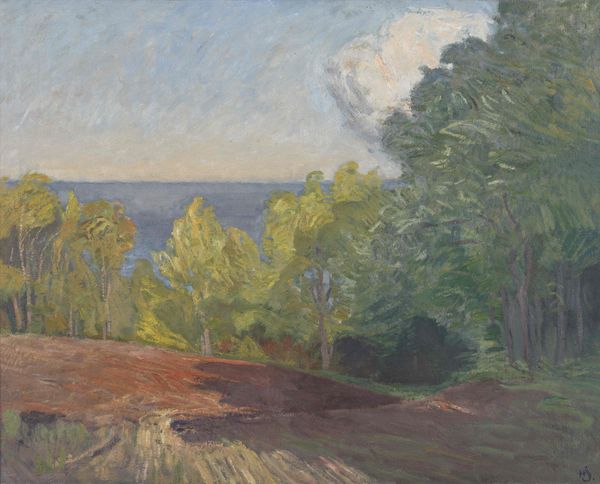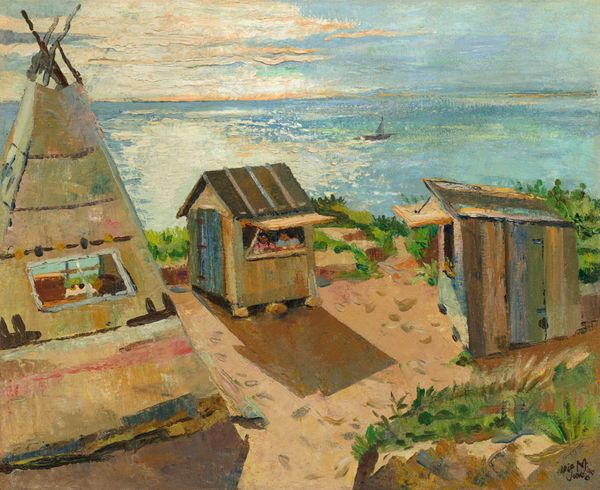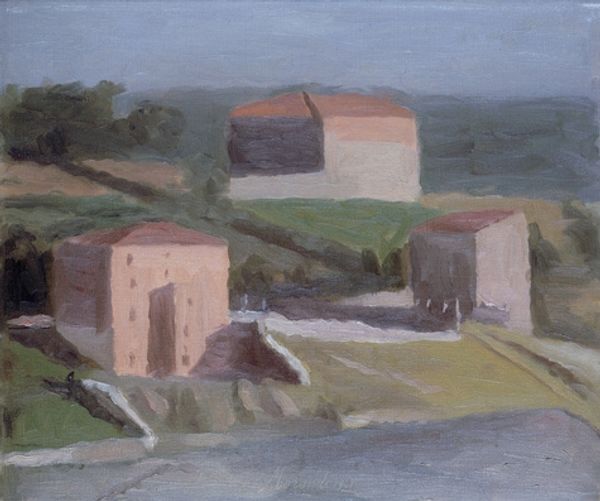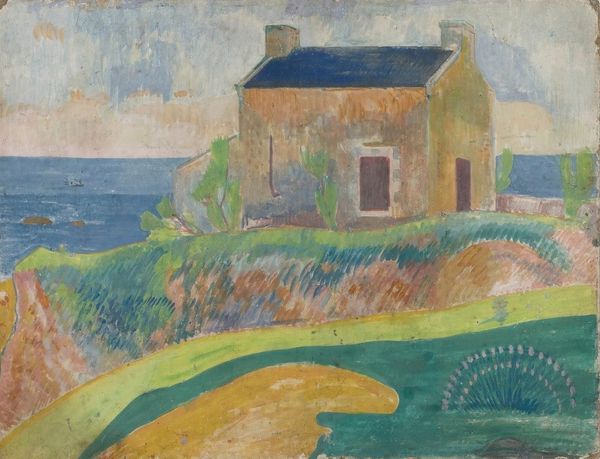
#
abstract painting
#
water colours
#
possibly oil pastel
#
handmade artwork painting
#
oil painting
#
acrylic on canvas
#
underpainting
#
painterly
#
painting painterly
#
watercolor
Dimensions: 70 cm (height) x 96 cm (width) (Netto), 82.4 cm (height) x 108.2 cm (width) x 5.7 cm (depth) (Brutto)
Editor: This is "Bastions, Christiansø," painted by Karl Isakson in 1921. It’s currently housed at the SMK, Statens Museum for Kunst. Looking at it, I'm struck by how geometric it is. It's like the artist is building up the scene from these almost cubist blocks of color and form. What do you see in this piece? Curator: Indeed. We can appreciate the work for how Isakson dissects the landscape into constituent geometric elements. Observe how the buildings, rocks, and even the vegetation are reduced to their essential shapes. He manipulates colour to differentiate planes and create spatial depth within the composition. Editor: So, you're saying it's all about the relationship between these shapes and colours rather than trying to capture a realistic depiction? Curator: Precisely. The essence lies not in replicating the observed world but in the arrangement of formal elements. Notice the restrained palette. How do these muted tones influence the mood, the weight of each structural component, and the cohesiveness of the space overall? Editor: They feel very grounding, like the colors are reflecting a real location, and the use of light is really highlighting how shadows fall across this fortress or bastion... Do you think the light here might be representing something else, or is the light itself the subject here? Curator: I wouldn't impose that kind of metaphor, but more so how Isakson manipulates our perspective. Light itself reveals forms through shadows and creates visual weight and rhythm. Consider its formal role first, then, we might look at how the material, like oil, supports or even counters the intention behind this image. Editor: I see what you mean. I've always looked for narratives behind artwork, but here it seems like the artwork *is* the narrative! Curator: It shows how an understanding of fundamental visual components, the architecture of a picture if you like, is a key aspect in analyzing paintings of any period.
Comments
No comments
Be the first to comment and join the conversation on the ultimate creative platform.
